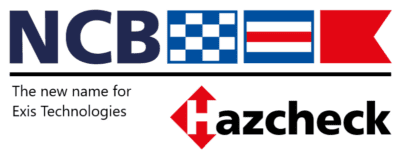IMDG Code: Prevent, Protect and Facilitate
In dealing with the IMDG Code and the shipment of dangerous goods by sea then it is easy to forget the purpose of the code, being to:
- protect human life
- prevent marine pollution
- facilitate the free movement of dangerous goods.
Since we work in a changing world then the code needs to be updated to reflect these changes.
It is good to know that changes in the code do come about based on industry feedback. One example of this is the change in the new Amendment 38-16 in relation to polymerising substances. As follows:
Polymerisation Class 4.1
2.4.1 The definition of Class 4.1 Flammable solids is amended to “Flammable solids, self-reactive substances, polymerising substances and solid desensitised explosives.”
Liable without stabilisation or temperature control to undergo a strong reaction in conditions normally encountered in transport or contamination.
This change is a direct result of the tragic accident that happened on board the MSC Flaminia in July 2012.
Three people died and it took weeks to put out the fire and many months to recover the cargo and ship. The ship was so badly burnt that the central section was cut out and replaced.
The court case and claims are still running.
The cause of the incident has been pin pointed as a polymerising substance that was not stowed in the correct conditions as it was not identified a requiring special treatment. The heat given out by the polymerisation lead to other cargo catching fire.
So of course it has taken time to determine the cause and then to feed this back into the regulations but never the less it is good to know that these changes do come through.
2.4.2.5 Class 4.1 Polymerising substances and mixtures (stabilised)
A detailed explanation of polymerisation is added to the definition of Class 4.1.
A substance is classified as polymerising if at 75°C or less a self-accelerating reaction takes place evolving gas and/or heat generating >300 Joules/gram
The Self Accelerating Polymerising Temperature (SAPT) is determined by tests in similar to those for Self-Accelerating Decomposition Temperature (SADT), the lowest temperature at which reaction occurs.
Polymerising substances require chemical stabilisation during carriage or temperature control in a tank or refrigerated container. So please do check if you ship substances with these properties.
SP 386
Chemical stabilisationcan be used to prevent polymerisation at temperatures between 75°C and < 50 °C in a packaging or IBC, or < 45 °C in a portable tank.
7.3.7 Temperature control proceduresin 7.3.7 must be adhered to if polymerisation can occur at temperatures below the above.
5.4.1.5.4 The control and emergency temperaturesmust be included on the transport document.
Other factors to be considered when booking polymerising substances –
- Duration of the journey
- Seasonal ambient temperature
- Effectiveness of the stabiliser
- Stowage “away from” sources of heat.
There are four new Class 4.1 UN N.O.S. Numbers for polymerising substances
Factors to indicating temperature control –
| Class or Division |
Subsidiary Risk |
UN No |
Proper Shipping Name |
| 4.1 |
– |
3531 |
POLYMERIZING SUBSTANCE, SOLID, STABILIZED N.O.S.
|
| 4.1 |
– |
3532 |
POLYMERIZING SUBSTANCE, LIQUID, STABILIZED, N.O.S.
|
| 4.1 |
– |
3533 |
POLYMERIZING SUBSTANCE, SOLID, TEMPERATURE CONTROLLED, N.O.S.
|
| 4.1 |
– |
3534 |
POLYMERIZING SUBSTANCE, LIQUID, TEMPERATURE CONTROLLED, N.O.S.
|







